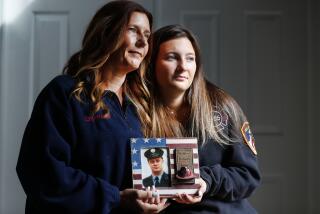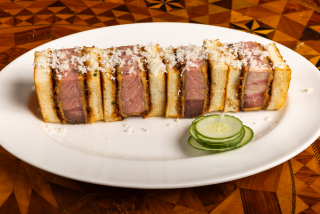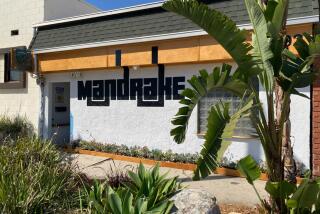Near ground zero, a memorial for 9/11 ... with Guinness on tap

When the Twin Towers fell, O’Hara’s Restaurant and Pub was all but buried beneath the rumble. But like so much here at the World Trade Center site, it rose again. Though it remains a lively tavern, it has also become a powerful monument.
Reporting from New York City — After the first plane hit the north tower of the World Trade Center, O’Hara’s Restaurant and Pub filled up quickly with the commodity traders who flooded in from the doomed building, taking refuge in the neighborhood tavern.
They had no idea what was to come. “Nobody was really sure what was going on,” recalled Michael Keane, the pub’s co-owner.
Together they watched the terror attack unfold on a 19-inch television perched in a corner of the bar. When a live video feed showed a second plane hitting the south tower, Keane and some bar employees ran up five floors to the roof of the bar’s quaint red brick building.
“We could see the hole on this side of the tower and we had a bunch of papers burning on the roof, so we came down and got everyone out,” he said.
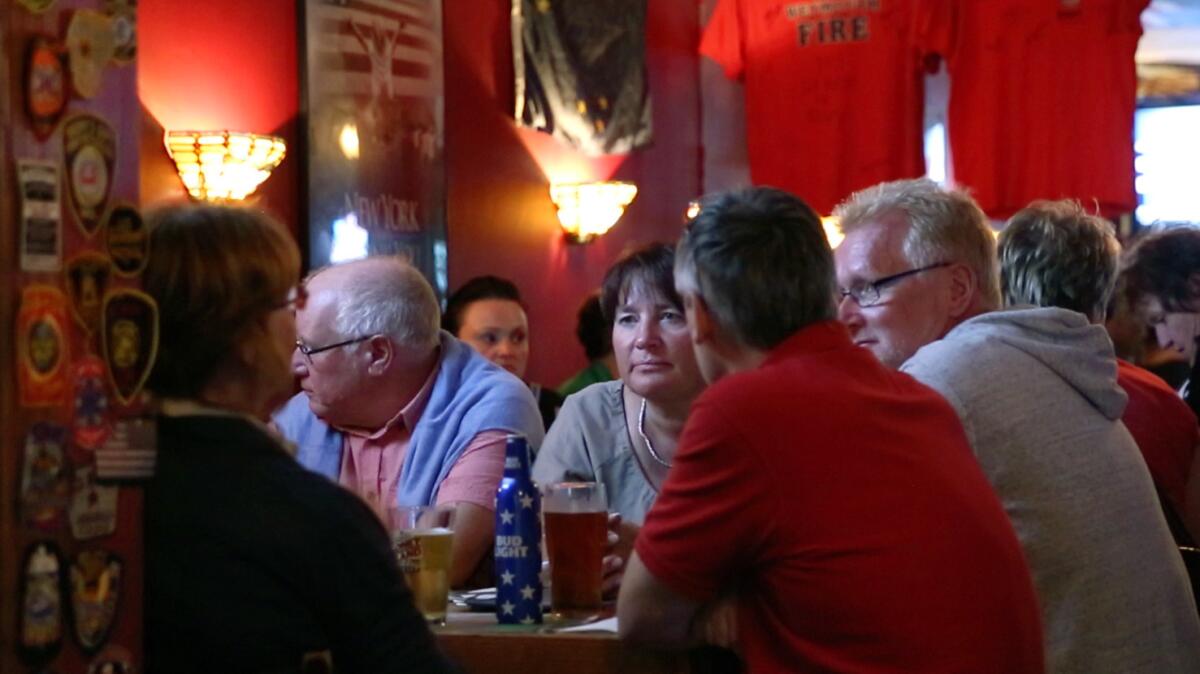
And so began O’Hara’s life after 9/11. The bar went through the same arc of emotions and challenges that so many New York residents and workers experienced in the aftermath of the attack — shock, grief, rebuilding and somehow finding a way to move forward.
“It was a tough go for a while,” said Keane.
Fifteen years later, O’Hara’s remains much as it used to be — an unpretentious Irish bar with Guinness on tap and bartenders who greet regulars by name. But it is altered, too.
Large television screens mounted on walls of the bi-level bar have replaced the 19-inch TV. A new influx of customers — workers who moved into the gleaming office towers rebuilt on the World Trade Center site — have adopted the pub as their after-work social spot. Tourists, too, often find their way to O’Hara’s after visiting the National September 11 Memorial and Museum.
Perhaps the biggest change in O’Hara’s post-9/11 incarnation is the way it embraced the past and became a memorial to the first responders who died trying to rescue people from the towers.
It started on the first anniversary, Keane said, when the bar was filled with police officers and firefighters, not just from New York, but from across the country and abroad, who gathered to drink and reminisce after the official commemorations at ground zero.
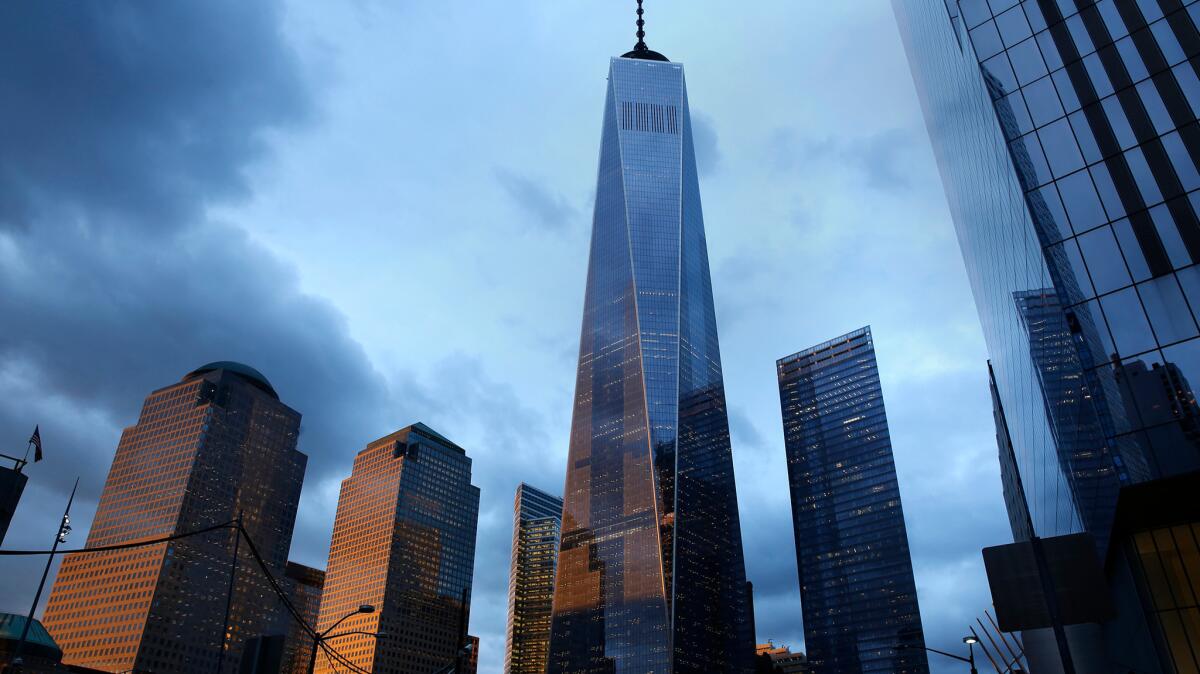
Some of the visitors posted cloth patches with the insignias of their departments to the walls of the bar. The gesture took hold and became a tradition as the years passed. As the word got out, cops and firefighters came to O’Hara’s on pilgrimages, adding their own patches to the collage that honors the 343 New York City firefighters, 23 New York police officers, 37 Port Authority police officers and eight paramedics who died on 9/11.
Now, the walls have become a road map of America’s emergency responders — Detroit, Chicago, Las Vegas, Los Angeles, Baton Rouge. Too many places and too many patches to count, Keane said.
The bar’s close ties to first responders is not without reason. One block away is the FDNY’s Engine 10, Ladder 10 firehouse, which lost six men on 9/11, including a retired captain who had been working as the fire marshal for the World Trade Center.
See the most-read stories this hour »
Firefighters from the “Ten House,” as it is known, have been coming to O’Hara’s since it opened in 1983 and many were close to the bar’s staff.
It was partly due to this relationship that O’Hara’s managed to reopen in April 2002, earlier than many other nearby businesses. Using their FDNY connections, Keane and his colleagues obtained passes allowing them to enter the street where the bar is located, even though a large area around the collapsed towers remained cordoned off for months.
They found the building still standing, but it, too, was covered in debris. They spent months clearing it out, lugging heavy bags gathered on the roof down the stairs, Keane said.
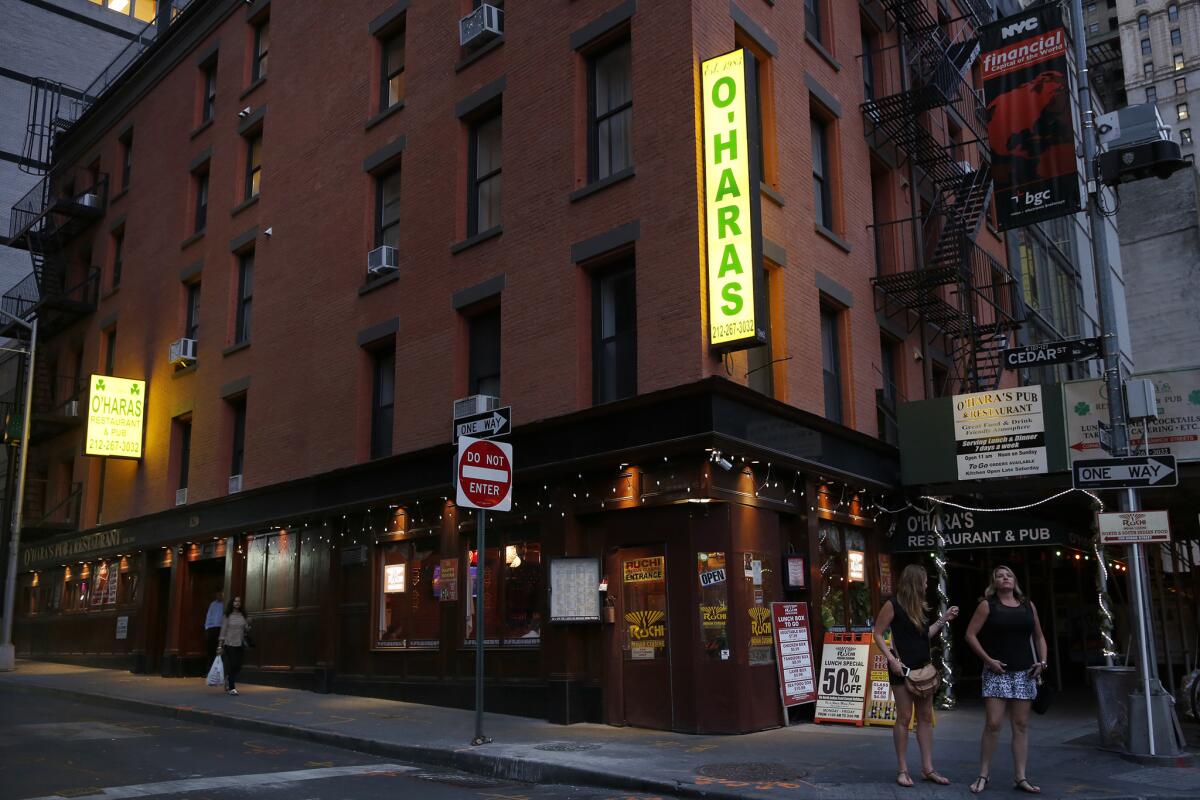
On the day the tavern reopened, many of the bar’s old customers returned to a neighborhood forever changed.
“People who had worked down here didn’t work here any more. The trains that they took were different. Everything was different. So this gave them some normalcy,” Keane said.
Those early months were difficult emotionally for the employees, especially when they would learn that a regular they had not seen for a while, who they had hoped had moved to offices in another part of the city, was among those who died when the towers collapsed.
Over the years, O’Hara’s patrons and employees evolved to reflect the passage of time. On a recent weeknight, the patrons were a mix of tourists and office workers, none of whom had worked in the area before 9/11. Bartender Dave DeMarco, 28, who recently also became a partner in the bar, was just starting eighth grade on 9/11.
Michael Weaver started coming to O’Hara’s a year ago when the digital advertising company he works for moved from midtown Manhattan to 4 World Trade Center. For Weaver, 47, the bar’s draw is less about its ties to 9/11 than about its friendly atmosphere, a place where he can have a beer and conversation before commuting home to New Jersey.
“It’s a community,” he said.
It’s a nice day when people feel comfortable coming here.
— Michael Keane, O’Hara’s Restaurant and Pub co-owner
Tourists, too, sometimes land at O’Hara’s for reasons other than the lessons it holds about the past. John Raymond, 75, and his wife, Mary Raymond, 74, of Dallas, were spending one night in New York before joining a cruise to New England and Canada. Their hotel was near the World Trade Center and they had spent part of the day visiting the 9/11 memorial.
Both of Irish ancestry, they had wanted to have dinner in an Irish bar nearby and had identified O’Hara’s in an Internet search before leaving Texas. Once at the bar, they were immediately curious about the patches and other 9/11 memorabilia on the walls.
Their waiter quickly produced “the book,” a large album kept at the bar that is filled with photos of O’Hara’s immediately after the attacks and other images of the aftermath that had been donated by police and firefighters.
Taking turns looking at the photos, the couple was clearly moved. “It’s really hard to fathom what happened here,” Mary Raymond said. “There are photos here that we didn’t see in the museum. It’s more personal.”
It is personal for Keane. Every year as the anniversary approaches, the painful memories return .
“I don’t want to feel that way anymore,” he said.
But then, on the day itself, the bar fills with police officers, firefighters and family members who lost relatives in the attack. And he feels a bit better.
“It’s nice to see those guys,” Keane said. “It’s a nice day when people feel comfortable coming here.”
MORE NATIONAL NEWS
Coasting is no longer an option for Hillary Clinton, given Donald Trump’s resilience
Hanging on in Navajo Nation: First the water turned orange, then the air went bad
The states with the biggest Obamacare struggles spent years undermining the law
More to Read
Sign up for Essential California
The most important California stories and recommendations in your inbox every morning.
You may occasionally receive promotional content from the Los Angeles Times.
